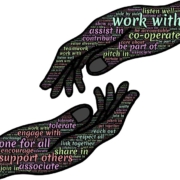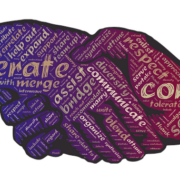Archive for year: 2023
Have you ever found yourself in a negotiation, presented with an offer that (later) objectively seems fair, but something about it just doesn’t sit right with you? You can’t quite put your finger on it, but you’re inclined to reject the offer simply -because it came from the other side. If this sounds familiar, you’ve likely experienced a psychological phenomenon known as “Reactive Devaluation” which I learned about first time during my MIT Sloan negotiation course.
Reactive Devaluation is like the invisible “Elephant in the Room” of negotiations. It’s a cognitive bias that causes us to devalue proposals, not based on their actual merit, but just because they come -from someone we perceive as an adversary. It’s like receiving a beautifully wrapped gift, but because it’s from your annoying neighbour, you’re immediately convinced it must be a box of crap..
Understanding Reactive Devaluation:
Let’s take a real-world example. Imagine you’re negotiating a business deal. Your counterpart, who you’ve had some disagreements with in the past, makes a proposal. The proposal is objectively fair, and under normal circumstances, you would accept it. However, because of your past experiences and the fact that the proposal comes from them, you automatically -devalue it. You’re more likely to reject it or demand more, NOT because of the proposal’s content, but because of -who it’s coming from.
This, in essence, is Reactive Devaluation at play.
Now, you might be thinking, “Well, that’s just being cautious, right?” Not quite.
Reactive Devaluation can lead straight to missed opportunities and prolong conflicts, even when a mutually beneficial resolution is within reach. It’s like refusing to take a lifeboat from a sinking ship because you don’t like the person offering it.
Now that we’ve identified the invisible Elephant in the Room, let’s discuss how we can guide it towards the exit. Overcoming Reactive Devaluation isn’t about winning or losing; it’s about ensuring that the negotiation process is fair and productive for all parties involved. Here are some strategies to help you navigate this tricky terrain:
- Awareness is Key: The first step in overcoming Reactive Devaluation is recognizing it. Being aware of this bias can help you question your initial reactions to proposals and evaluate them more objectively. It’s like having a mental referee who blows the whistle when your biases start to play foul.
- Emphasize Common Goals: Framing the negotiation as a joint problem-solving process can help reduce the perception of the other party as an adversary. It’s like turning the negotiation table into a team huddle, where everyone is working towards a common goal.
- Use Objective Criteria: Basing your proposals on objective criteria or industry standards can make them more acceptable to the other party. It’s like using a universally accepted recipe in a bake-off, making it harder for others to reject the delicious cake you’ve baked.
- Third-Party Involvement: Sometimes, having a neutral third party can help facilitate the negotiation process. They can provide an outside perspective and help parties evaluate proposals more objectively. It’s like having a neutral judge in a talent show, ensuring that the best performance wins, regardless of personal biases.
- Delay the Proposal: If possible, delay making your proposal until after some discussion has taken place. This allows the other party to feel heard and understood, which can make them more receptive to your proposal. It’s like warming up before a workout, preparing your body (or in this case, the negotiation) for -the mainevent.
Reactive Devaluation is a common, often unconscious, bias that can hinder the negotiation process. But with awareness and the right strategies, you can ensure it doesn’t derail your negotiations. So, the next time you find yourself instinctively devaluing a proposal, take a moment to consider whether the invisible elephant has entered the room. And if it has, take your time. It is simply awareness and the factor of Time that separates any (emotional) reaction from a real, well considered Reply the negotiation process itself and our counterpart deserves.
“When the pressure is on, you don’t rise to the occasion. You fall back to your highest level of preparation” it is said and awareness plus the strategies around “Reactive Devaluation” are worth to be baked in.
Have you ever thought about how the Second Law of Thermodynamics applies to our negotiations as well? I recently came across a fascinating blog article by German psychologist Roland Kopp-Wichmann, titled “Man, Woman, Relationships – and the Second Law of Thermodynamics”. The article uses this law – the principle that everything tends to get worse over time without active intervention – as a metaphor for relationships. Just like a car, garden, or house, relationships require regular maintenance and attention to thrive. This concept can be applied to negotiation relationships, especially when we move into Partnership or SMARTnership which, quite naturally, require ongoing attention, care, and honest effort to sustainable maintain, here are some valuable insights:
The Interplay of Personal and Professional Life
Kopp-Wichmann emphasizes the interconnectedness of personal and professional life. As negotiators, we must recognize that our personal emotions and unconscious biases can influence our professional interactions. By acknowledging this interplay, we can better manage our emotions and approach negotiations with a clear, focused mind.
Active Maintenance in Negotiations
Just as a garden or a house requires regular maintenance to thrive, so do our negotiation relationships. Without active intervention, relationships can deteriorate over time – a concept mirrored in the second law of thermodynamics. As negotiators, we must continually invest time and effort into maintaining our important relationships, ensuring they remain strong and productive.
Communication: The Heart of Successful Negotiations
The article highlights the importance of open, honest, and regular communication in maintaining a healthy relationship. This is a key skill for negotiators, who must be able to effectively communicate their needs, understand the needs of others, and find common ground. Regular check-ins, active listening, and clear communication can help prevent misunderstandings and build trust.
Avoiding Projection in Negotiations
Kopp-Wichmann warns against the danger of projecting unresolved personal issues onto one’s partner. In a negotiation context, this serves as a reminder to be aware of our own biases and not to attribute them to the other party. By recognizing and addressing our own issues in time, we can approach negotiations with a clear mind and a fair perspective.
Balancing Emotion and Strategy in Negotiations
The article distinguishes between love, which is spontaneous and unpredictable, and partnership, which involves conscious decisions and negotiations. This balance between emotional connection and strategic decision-making is crucial in negotiations. While emotional intelligence can help us understand and connect with others, strategic thinking allows us to always make decisions that perfectly align with our goals.
By understanding the interplay of personal and professional life, actively maintaining our relationships, communicating effectively, avoiding projection, and balancing emotion and strategy, we can become more effective human beings and negotiators. As the second law of thermodynamics reminds us, maintaining a system requires honest effort – but the results are well worth it.
So, how will you apply the Second Law of Thermodynamics to your next negotiation?
In negotiations, the concept of value often takes center stage. Traditionally, this value is viewed in objective terms – the tangible benefits and outcomes that one or both parties gain from the negotiation. However, a deeper dive into the art of negotiation reveals a more nuanced perspective, one that recognizes the importance of subjective values. This is the perceived value that each party derives from the negotiation process, which can significantly influence the overall outcome and future relationships.
Subjective value in negotiation is multifaceted, encompassing roughly four distinct types: instrumental, self, process, and relationship. Each of these elements plays a significant role in shaping the negotiation experience and its perceived value.
Instrumental Subjective Value
Instrumental subjective value refers to the perception of the tangible outcomes of the negotiation. It’s not just about the final agreement, but how each party individually perceives the benefits they’ve gained. To enhance this, it’s crucial to understand the other party’s needs and interests. This understanding allows you to craft proposals that not only meet your objectives but also align with the other party’s goals, thereby increasing the perceived value of the outcome. This approach, known as interest-based negotiation, encourages parties to explore underlying needs and desires, leading to creative solutions that can maximize mutual gains. Additionally, employing objective standards and benchmarks can help ensure perceived fairness, further enhancing the instrumental subjective value.
Self Subjective Value
Self subjective value is about the negotiator’s self-perception during and after the negotiation. It involves feelings of competence, pride, and the sense of behaving appropriately. To foster this, avoid dwelling on your victories and instead, acknowledge! the good points made by the other party. This approach not only maintains the other party’s pride but also creates an environment where both parties can express their arguments without fear of immediate contradiction plus it allows the other party to feel competent and respected. Furthermore, adhering to the norms of negotiation and respecting the hierarchical dynamics can help negotiators feel they are behaving appropriately.
Process Subjective Value
Process subjective value pertains to the perceived fairness and efficiency of the negotiation process. Active listening plays a significant role here. By expressing genuine curiosity and attentiveness about the other party’s perspective, you can make them feel heard and valued. Additionally, giving the other party a sense of control over the process can enhance their perception of fairness. Striking a carefully considered balance between not agreeing too early and not quibbling for too long will also help maintain a process that feels neither too easy nor too difficult.
Process subjective value is about the perceived fairness and efficiency of the negotiation process. It’s about feeling heard and treated fairly, and that the process is neither too easy nor too difficult.
Relationship Subjective Value
Finally, relationship subjective value focuses on the impact of the negotiation onto the relationship between the parties. To foster relationship subjective value, negotiators could focus on establishing rapport early on and finding common ground. Expressing genuine curiosity about the other party can help build a positive impression. Moreover, focusing on similarities can foster trust and a good relationship. Lastly, making the negotiation process enjoyable can increase the likelihood of future negotiations.
While these four types of subjective value are distinct, they are also interconnected. A negotiation typically is not just a one-time transaction but a complex process that can shape relationships and future interactions. Therefore, it’s essential to consider all these aspects while trying to strike a balance between them.
Recognizing and fostering subjective value in negotiations will lead to more satisfying outcomes and stronger relationships. It’s not just about the objective gains but also about the perceived value of the process and its impact on the parties involved. By understanding and applying these principles, we transform the Art of Negotiation into a more rewarding, welcomed, and enriching experience plus we achieve the desired outcomes more easily and ensure a satisfying, fair, and relationship-enhancing negotiation process and a valuable contribution to the development of one’s own negotiator personality.
Here’s a recommended reading for those want dive deeper:
In the realm of impact negotiation, a principle that often goes unnoticed, yet holds unsurpassable wisdom, is the Principle of Simplicity. This concept, inspired by Danie Beaulieu’s techniques and Leonardo Da Vinci’s timeless wisdom, asserts that “Simplicity is the ultimate sophistication.” It is the genius of distilling complexity into something tangible and comprehensible.
In today’s fast-paced, information-saturated world, the power of simplicity is increasingly being recognized and celebrated by authors and thought leaders. However, its actual implementation remains a rarity. This is particularly true in the sphere of advanced negotiation and professional settings, where complexity is often mistaken for sophistication, and simplicity is erroneously viewed as unprofessional or simplistic.
In the context of impact negotiation, the Principle of Simplicity is not just about making things easier to understand. It is about achieving the highest form of perfection and the greatest possible well-being for our clients through efficient information acquisition. It is about focusing on the core issue at hand, using time optimally, and encouraging clients to take action.
The application of this principle fundamentally alters the dynamics of communication. It goes beyond the verbal component, incorporating movement, assembly, and feeling. It transforms the traditional mediator-client relationship, fostering a collaborative environment where both parties become observers of- and active participants in the negotiation process.
This shift in perspective, facilitated by the Principle of Simplicity, is instrumental in building a trustworthy relationship. It reduces resistance, encourages open dialogue, and paves the way for innovative solutions to longstanding problems.
So, what value does the Principle of Simplicity bring to a negotiation?
- Clarity and Focus: By simplifying complex issues, parties can focus on the core problem, leading to more productive discussions and effective solutions.
- Efficient Use of Time: Simplicity allows for optimal use of time, as parties are not bogged down by unnecessary complexities.
- Active Participation: Encouraging clients to take action fosters engagement and ownership of the negotiation process, leading to more satisfactory outcomes.
- Innovative Solutions: A fresh perspective often leads to novel solutions to old problems. Simplicity encourages this shift in perspective.
- Trust and Collaboration: The shared understanding fostered by simplicity builds trust and promotes collaboration, key elements in any successful negotiation.
The “Principle of Simplicity” is not just about making things easier. It’s about enhancing understanding, fostering collaboration, and ultimately, achieving better negotiation outcomes. As we continue to navigate the complexities of the modern world, let us not forget Da Vinci’s wisdom: “Simplicity is the ultimate sophistication. Genius is the ability to simplify the complicated”. In impact negotiation, it might just be the key to unlocking success, so.. Keep it simple!
In the world of negotiation, understanding human behaviour is critical. Robert Cialdini, a prominent social psychologist, identified six principles of influence that can play a crucial role in these scenarios. These principles – reciprocity, commitment (or consistency), social proof, liking, authority, and scarcity – have evolved in their application in today’s interconnected society.
Reciprocity is a fundamental aspect of human interaction. In negotiation, this principle can be effectively applied by initially asking for more than what one needs, then making a concession to what one genuinely needs. This tactful concession can lead your counterpart to feel the need to reciprocate, making them more likely to accept your proposal.
Commitment or Consistency is another powerful tool in negotiation. People tend to stay consistent with their past commitments. By getting your counterpart to agree to something small initially, they’re more likely to agree to more significant requests later on due to the desire to stay consistent with their initial commitment.
Social Proof becomes increasingly influential in the age of social media and digital connectivity. People often gauge what’s right or desirable based on what others perceive as right or attractive. In a negotiation, providing evidence that others are interested in or have benefited from your offer can make it more appealing to your counterpart.
Liking is an underpinning of successful negotiations. It’s no surprise that people prefer to say yes to those they know and like. Building rapport, finding common ground, and creating positive interactions can foster liking, making your counterpart more likely to agree with you.
Authority plays a significant role in shaping people’s decisions. People are more likely to agree to those they perceive as having authority, power, or extensive knowledge. Demonstrating your authority, expertise, or experience can give you a considerable advantage in a negotiation.
Scarcity brings into play the psychological bias where people assign higher value to opportunities that they perceive as scarce. In a negotiation, creating a sense of scarcity, such as through time-limited offers or highlighting the uniqueness of the opportunity, can make your offer more attractive.
These principles are not just theoretical; they have practical applications across various facets of life and work. For instance, salespersons often use props to make their pitches more effective and memorable, which is a perfect blend of the principles of ‘Liking’ and ‘Social Proof’12.
However, while these principles can be highly effective at times, they also raise important ethical considerations. Are they brilliant tactics or unfair manipulation? I believe the answer lies in how they’re used. If applied with respect for the other party’s autonomy and well-being, they can be powerful tools for achieving mutually beneficial outcomes. However, if used to deceive or exploit, they can be considered manipulative and unethical.
Would I use them in negotiations? Yes, but with caution. I would strive to apply these principles ethically, with the goal of creating win-win situations. For instance, I might use Reciprocity by offering valuable information or assistance, hoping to foster goodwill and cooperation. I could use Scarcity by emphasizing the unique benefits of my proposal and the opportunity cost of delay. However, I would avoid creating false scarcity or pressuring the other party into hasty decisions.
They’ve all influenced the negotiation strategies of Program on Negotiation faculty member Daniel L. Shapiro, Ph.D. Here’s a bit Q&A with Professor Shapiro, an Associate Professor of Psychology at Harvard Medical School/McLean Hospital, founder and director of the Harvard International Negotiation Program and author of Negotiating the Nonnegotiable: How to Resolve Your Most Emotionally Charged Conflicts.
Q. What’s one surprising thing people may not know about you?
A: When I was seven years old, I bought a book called The Amateur Magician’s Handbook, which led to seven weeks of magic classes. It became one of my childhood passions. I even had business cards that said, “For sleight of hand, call Magic Dan.” I used to perform at birthday parties for the wild charge of $2 for a half-hour show. I remember feeling incredibly guilty when I bumped it up to $5.
Q: Do you still practice magic?
A: Not recently, but I truly think that training in magic was one of the best forms of education I could have had. I learned how to speak in front of people and keep their attention. It also taught me that there is often more than meets the eye. My whole life’s work has been dedicated to that—trying to understand what’s beneath the surface in deeply embedded conflict situations, when it looks like two people are acting irrational or against their own interests. Maybe it’s an illusion and we need to understand what’s really behind it in order to help move things forward.
Q: What personality trait do you feel causes the most or biggest problems at the bargaining table?
A: Obstinance is a big problem. When negotiators are completely egoistic and stuck on themselves, they’re unlikely to listen to others. They’re unlikely to seek an outcome that works for everybody, and in turn, they fail to achieve an optimal outcome. I think strong muscle without emotional sensibility doesn’t take you very far..
I highly agree. In an Impact Negotiation, comprehending the mindset of our counterpart is paramount. It’s not just about avoiding conflicts but fostering meaningful interactions and fostering shared understandings. Today, we’re delving into another principle of Impact Techniques – the art of “Visualizing Known Information”
In Impact Negotiation, the objective isn’t merely to communicate, but to resonate. This process often involves taking the familiar – everyday objects, experiences, and knowledge – and putting them into a novel context. It’s about crafting a bridge between the known and the new, fostering a rich tapestry of cognitive, emotional, visual, and tactile responses, all caused a “shift of perspective” onto a interesting process.
By using visualization techniques, we can elicit stronger engagement from our counterparts, facilitating their openness and improving their ability to process our messages best way. Let’s explore three examples of how everyday objects can be used in this context.
- The Hourglass: The custom made hourglass can symbolize time scarcity and the need for decision-making. It can create a sense of urgency, triggering a cognitive response that encourages your client to focus and weigh their options.
- The Jigsaw Puzzle: A custom made jigsaw puzzle is a great metaphor for problem-solving. Each piece represents a different aspect of the problem, and only when all the pieces are put together can the complete picture – or solution – be seen. This can visually convey the complexity of an issue and the need for comprehensive solutions.
- The Compass: The custom made/labeled compass can represent direction and guidance. By using it, you could visually communicate your role as a guide in the negotiation process, helping your client navigate the complexities and move towards a mutually beneficial outcome.
In each of these examples, we’re linking known information (the familiar object) with new information (the negotiation context), triggering multi sensory responses and enhancing client engagement, but here’s my favorite for you:
The Gypsy Thread magic trick, which involves breaking a thread into multiple pieces and then magically restoring it to a single piece, can symbolically perfectly well! represent the process of resolving a conflict or dispute in a negotiation. The broken thread can represent the relationship between the disputing parties, which has been damaged or severed due to circumstances of conflict.
As the magician (or in this case, the negotiator or mediator) slowly gathers and restores the broken thread, it signifies the process of careful listening, understanding, and piecing together the different perspectives and interests of the parties involved in the dispute. The final act of restoring the thread to its original form can represent the resolution of the conflict, where the once broken relationship is now healed and whole again… “..and now we start from scratch, please”
This magic trick can serve as a powerful visual and symbolic tool in negotiations, particularly in emotionally charged conflicts. It can help the parties involved understand that their fragmented relationship can be mended and made whole again, much like the broken thread.
Moreover, as Professor Shapiro mentions, magic can teach us that there is often. way. more. than meets the eye. In a negotiation context, this could refer to the underlying interests, concerns, and emotions that may not be immediately apparent in a conflict situation. The Gypsy Thread trick, therefore, can also signify the process of revealing and addressing these hidden elements to resolve the conflict effectively. Finally, the very act of performing a magic trick in the midst of a tense negotiation could potentially lighten the atmosphere, introduce an element of surprise, and shift the participants’ focus, making them more receptive to dialogue and resolution by “Zooming Out” after intense talks, overlook the whole picture of the negotiation, focus back onto steps heal a heated situation. Here’s how to do and enjoy healthy, “magical” relationships: https://youtu.be/GBrhijyR6FY
Today, we dive into the world of negotiation, not just through words, but with an emphasis on full sensory engagement. The concept of ‘Impact Negotiation’ we’re exploring today is grounded in the work of Dani Beaulieu and her impact techniques for psychotherapy. The principle we’re focusing on is the ‘Multisensory Experience’.
Imagine this: our understanding and learning are not confined to the realm of the audible. Indeed, the prevalent method in negotiation relies heavily on the auditory sense, but what if we were to consider that a person could learn most effectively when all senses are engaged?
Consider a scenario where a misunderstanding arises between you and your negotiation counterpart. They perceive your message differently from your intended communication. Such discrepancies often lead to communication roadblocks, subsequently impacting the relationship you share with your conversation partner. This can lead to a sense of frustration and demotivation, making the entire negotiation process feel arduous.
To circumnavigate these communication hurdles, we propose a shift in perspective. Rather than relying solely on the auditory sense, why not tap into the visual one? Research suggests that approximately 60% of all information is received through the visual sense, making it a potent tool in our communication arsenal.
Thus, the essence of ‘Impact Negotiation’ isn’t about asking, “How can I articulate my point to my client?” but rather, “How can I demonstrate my point to my client or elucidate it in a different way?”
By incorporating a multisensory approach, we’re not only making our message clearer, but we’re also enriching the negotiation experience. This method leverages the fundamental principles of human psychology, acknowledging the diverse ways in which we perceive and process information.
Stay cutious as we delve deeper into the principles of ‘Impact Negotiation’ in our upcoming blog posts. Our exploration will involve the blending of negotiation tactics with psychological insights, resulting in an innovative and effective approach to achieving successful negotiation outcomes.
The article “Investigative Negotiation” from Harvard Business Review presents a comprehensive approach to negotiation, emphasizing the importance of understanding the other party’s perspective. Here are the key concepts:
- Understanding the Other Side’s Motives and Goals: The first principle of investigative negotiation is to understand why the other party wants what they do. This involves digging for information and thinking like a detective. Inaccurate assumptions about the other side’s motivations can lead to proposing solutions to the wrong problems, needlessly giving away value, or derailing deals altogether.
- Identifying Constraints: The second principle is to figure out what constraints the other party faces. Often, when your counterpart’s behavior appears unreasonable, their hands are tied somehow. You can reach an agreement by helping overcome those limitations.
- Interpreting Demands as Opportunities: The third principle is to view onerous demands as a window into what the other party prizes most. This information can be used to create opportunities.
- Finding Common Ground: The fourth principle is to look for common ground. Even fierce competitors may have complementary interests that lead to creative agreements.
- Staying at the Table: The final principle is to stay at the table and keep trying to learn more, even if a deal appears lost. Even if you don’t win, you can gain insights into a customer’s future needs, the interests of similar customers, or the strategies of competitors.
The article also provides several examples to illustrate these principles, emphasizing the importance of asking questions, mitigating the other party’s constraints, interpreting demands as opportunities, creating common ground with adversaries, and investigating even if the deal seems lost.Here’s the full article: https://hbr.org/2007/09/investigative-negotiation
In the world of business, negotiation is a critical important skill. It’s the art and comprehensive science of reaching an agreement through dialogue, where both parties involved have their interests at stake. Traditional negotiation methods often revolve around a zero-sum game, where one party’s gain is the other party’s loss. However, Keld Jensen’s SMARTnership approach to negotiation offers a fresh, far going perspective, transforming negotiations into real win-win opportunities claiming all the possible value. This innovative, comprehensive approach is designed to create value for all parties involved, fostering a collaborative and mutually beneficial relationship.
Here are the key benefits of the SMARTnership approach I learned during my take of the course:
- Value Creation: The primary goal of SMARTnership is to create value for all parties involved. Instead of focusing on dividing a fixed pie, it encourages negotiators to expand the pie, creating more opportunities for everyone. This approach fosters creativity and innovation, as parties work together to identify and exploit potential synergies.
- Long-Term Relationships: SMARTnership promotes the development of long-term, sustainable relationships. By focusing on mutual gains, it fosters trust and cooperation, which are essential for maintaining long-term business relationships. This approach can lead to repeat business, referrals, and a positive reputation in the industry.
- Reduced Conflict: By shifting the focus from winning to collaborating, SMARTnership reduces the potential for hindering emotions, conflict. It encourages open communication and understanding, which can help prevent misunderstandings and disputes. This can save time, money, and stress that would otherwise be spent on resolving conflicts.
- Risk Mitigation: SMARTnership helps mitigate risks by promoting transparency and open communication. By understanding each other’s needs and constraints, parties can work together to develop solutions that minimize risks for everyone involved. This will lead to more stable and predictable business relationships.
- Efficiency: SMARTnership leads straight to more efficient negotiations. By focusing on mutual gains, parties can avoid the time-consuming and often frustrating process of haggling over every detail. This can lead to quicker agreements and less wasted resources and loops of re-negotiation.
- Improved Reputation: Businesses that adopt the SMARTnership approach can definitely improve their reputation. By demonstrating a commitment to fairness, collaboration, and real, mutual benefit, they can position themselves as ethical and responsible business partners. This can enhance their brand image and attract more customers, partners, and investors.
- Increased Satisfaction: Finally, SMARTnership can lead to increased satisfaction for all parties involved. By ensuring that everyone’s interests are taken into account, it can lead to outcomes that everyone is happy with. This can improve morale, motivation, and commitment, which can have a positive impact on business performance.
Keld Jensen’s SMARTnership approach to negotiation offers a powerful, game changing alternative to traditional zero-sum negotiation methods, the shift is truly huge. By focusing on cooperative and extensive value creation options, long-term relationships, reduced conflict, risk mitigation, efficiency, improved reputation, and increased satisfaction, it can, it will transform negotiations to new heights. Whether you’re negotiating a major business deal or a minor agreement, SMARTnership can help you achieve significant better outcomes for everyone involved: Take a free trial for a first impression: https://smartnership.thinkific.com/courses/the-great-negotiators-103-steps
Interesting links
Here are some interesting links for you! Enjoy your stay :)Contact
Doris Buchert
Ralf Born
Preyerstrasse 20
41239 Mönchengladbach
Phone: *49 2166 457000
Email: info@impactnegotiating.com
Customer Support
Monday-Friday:
7:30am to 7:30pm










